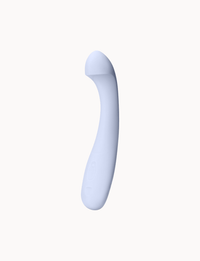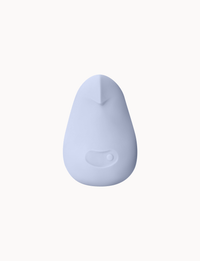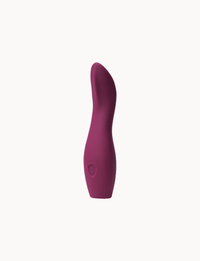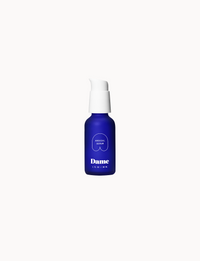Hormonal birth control was a wonderful invention, but let's face it: Its side effects aren't for everyone. Barrier methods can get expensive and prone to willpower slippage; IUDs can be invasive; abstinence is just no fun. Enter Fertility Awareness Method, or FAM, a method of tracking phases in your menstrual cycle in order to avoid pregnancy (or get pregnant, depending on your goals). It doesn't have side effects, is virtually free to practice, and can teach you a lot about the rhythms of your body. Unfortunately, it's often misunderstood, and definitely not a method you can employ casually.
For a lesson in FAM 101, we enlisted
Tamara Rubin, an AFAP-certified fertility awareness educator who teaches classes and sees private clients in New York City and online. (Remember, this is just a jumping-off point: Tamara recommends you work with an educator before using FAM!)
What, exactly, is FAM?
Well there’s FAM and there’s fertility awareness.
The acronym FAM refers to the Fertility Awareness Method of contraception. It is one of the most effective ways people can prevent pregnancy without synthetic hormones or devices. It’s sometimes called the “symptothermal” method because it involves a) observing fluids at your vulva, which tend to be more plentiful, slick, and stretchy when you’re fertile and about to ovulate—that’s the “symptom” part—and b) taking a basal body temperature when you wake each morning. Your temperature rises after you ovulate. That’s the “thermal” part.
FAM users record their observations on a chart to identify when they are fertile. There are techniques and rules to follow for contraception. It takes a little study and practice. Users also need a plan for how they will handle their “fertile window,” typically about 9 days per cycle. Some abstain from penetrative sex; some get creative with non-penetrative sex; others use barriers—a condom or diaphragm—or withdrawal.
People come to FAM with a desire to prevent or achieve pregnancy, but often the “awareness” opens other realms for exploration. It goes way beyond contraception. It’s a cultivation of your connection to cyclical nature, hormonal waves, and sexuality. It’s a doorway to power and bodily sovereignty. The loving, thoughtful, inclusive practice of fertility awareness is one of the tools we need to dismantle the patriarchy. You might laugh, but I’m not kidding.
So it actually works? What are the success rates?
Yes! The CDC (the U.S. Center for Disease Control) recently updated the efficacy rates cited for a variety of Fertility Awareness Based Methods (FABMs). The main CDC web page now gives a range of typical use failure rates of 2% to 23%. Each FABM has its own way of identifying the fertile window, and the different effectiveness ratings reflect that, among other factors.
In other words, practiced a certain way, Fertility Awareness can be 98% effective at preventing pregnancy. That’s better than the pill. The study that yielded this high effectiveness rating involved women who had received a thorough education from trained teachers using a specific curriculum. This method is very similar to FAM as I teach it.
We really need more research and development, but it’s difficult when the goal is a practice we teach to glorious, idiosyncratic humans, and not a product we manufacture for profit. Chelsea Polis, Ph.D., and Rachel Urrutia, an MD who teaches FAM, recently teamed up to summarize the research about all the FABMs and made this groovy chart comparing them.
What’s the difference between FAM and its less precise cousin, the Rhythm Method?
The old-fashioned Rhythm Method was a way of calculating fertile days based on cycle history without regard for daily observations. It had a failure rate of something like 25%. It was promoted mainly to married, hetero couples. Today, there’s an update to Rhythm called Standard Days Method, which has a failure rate of 14%. You need a very regular cycle to use it, with a period that comes every 26 to 32 days.
You tune in to the surges and urges, the ebb and flow of your libido. Your chart becomes a little sex diary. It’s expansive self-awareness.
You do NOT need a regular cycle to use FAM, because the daily observations let you know your fertility status that day, regardless of previous cycles. Daily observations are key. Inclusiveness and reproductive justice are central to the mission of The Association of Fertility Awareness Professionals, which certified me to teach. We support people’s goals, relationships, and identities — regardless of reproductive choices or religious affiliations.
What about plain ole pull-out?
Like FAM, pull-out or withdrawal depends on the skillful, consistent engagement of the user. Statistics say if 100 highly skilled perfectionists use pull-out for a year, 4 will get their partner pregnant. If 100 regular humans use it for a year, 22 will get their partner pregnant.
What are the benefits besides birth control and pregnancy planning?
You tune in to the surges and urges, the ebb and flow of your libido. Your chart becomes a little sex diary. It’s expansive self-awareness.
Critics point to the burden of having to abstain or modify sex during the fertile window. In practice, many couples report greater intimacy and creativity. After the window closes, there’s the exhilaration of making love without protection and virtually no worry, skin-to-skin, all-in.
FAM charts are also a good gauge of overall health. I might see evidence of issues like hyper- or hypothyroidism, adrenal fatigue, hormonal deficiencies, and dysregulations like polycystic ovarian syndrome (PCOS) in a chart. These are not diagnoses, but signs that indicate a need for testing or medical care.
I really wish people would chart their cycles before they go to a fertility clinic. I’ve had several clients successfully conceive after telling their doctors they wanted to hold off on the drug Clomid (an ovarian stimulator) and work holistically for a while.
I like to think FAM can make a serious dent in that ubiquitous assessment: “unexplained infertility.” When you’re trying to conceive, your chart guides your timing for intercourse, sure. But it also clues you in to whether your hormone levels are robust enough to support a pregnancy or whether you want to undertake a health initiative, like acupuncture or therapeutic abdominal massage, to improve your chances. Charting can help you schedule hormone tests at the optimal time. By pinpointing ovulation day, you can calculate an accurate due date and potentially avoid unnecessary induction or other invasive procedures. If the charts look great but a couple is still having trouble, get that guy to a urologist for sperm analysis.
Can anyone learn fertility awareness?
Certain concepts should be mandatory in sex ed. Not teaching people about cervical fluid is a jaw-dropping example of cultural gaslighting. It’s like teaching a unit on eyeballs, but pretending tears don’t exist.
Everybody, but especially people with cervixes and vulvas, should know that cervical fluid is a thing. If you go to wipe yourself and you notice things are really slippery down there, that’s likely to be cervical fluid and you are probably fertile that day. If you notice a spot of wet, gloopy or juicy business in your underpants (when you’re not aroused), you are likely to be at peak fertility. (The pressure of a BM often pushes fertile fluid out. So that’s a good time to tune in.)
You and your partner need to agree on how to navigate the fertile window. It’s a red flag if you cannot rely on a partner’s support or compliance.
These would not be your only fertile days during the month, but the potential for pregnancy is definitely there. You read it here; now you can never not know it.
WARNING: Knowing this does not mean you’re ready to practice FAM as your main form contraception. If you happen not to notice cervical fluid, that alone does not mean you are not fertile that day. There are cross-checks and rules to follow before FAM clears you for unprotected sex.
Is there anyone you do not recommend FAM to?
Not everyone can rely on FAM as their main method of contraception. Like the pill and the IUD, FAM does not protect from sexually transmitted infections. If you are unsure of your partner’s status or you have multiple partners coming and going, you need to use a condom every time. Still, FAM can help you decide what to do if the condom breaks, or FAM might lead you to postpone penetrative sex during your most fertile days, since condoms fail about 13% of the time.
It takes a few cycles to learn FAM, maybe more if there are irregularities we want to work on. Then it’s a practice that takes a few minutes each day. You have to ask yourself if you have it in you, and whether your routine is stable enough to accommodate another daily practice.
You and your partner need to agree on how to navigate the fertile window with alternate methods or delaying penetrative sex. It’s a red flag if you cannot rely on a partner’s support or compliance.
I don’t like to make blanket statements about who can and cannot use FAM. The best person to decide whether it’s right for you is you. Deciding when and whether and how you’re going to bring another human into the world—or not—is a really big deal, maybe the biggest deal. Honor yourself by taking the time to really research and think about your choices.
Can you learn FAM from an app? (And if not, how would you go about learning it instead?)
Some apps are just digital versions of the old fashioned Rhythm Method. They rely on algorithms to predict fertile days. I’m suspicious of that. Some apps and devices have had their research called into question, and it’s not great to share your personal data with a tech company.
It’s best to learn the science and technique of FAM really well, with the support of a certified educator. You can find one at AFAP. If you want a good primer, read chapters 3 to 6 of what many consider to be the FAM bible, Taking Charge of Your Fertility by Toni Weschler. I don’t want you to rely on software engineers telling you what to think or not to think about your fertility. Charting on paper gives you the fullest understanding, especially in the beginning.
Okay, but I reeeeallly want to use an app. Which ones are the best?
Yeah, it’s hard to beat the phone as a data collection tool. A lot of my clients use apps. You should still work with an educator at first, if you want to rely on fertility awareness for contraception.)
Kindara and Fertility Friend are popular. I like clients to turn off the features that predict fertility and or allow companies to harvest data, but that’s not always possible. The Body Literacy Collective is a nonprofit designing an app I’m pretty excited about. They won’t collect user data, it will be highly customizable, and you interpret your charts to decide whether you are fertile. In other words, it puts you in charge. Stay tuned!
What else do you want people to know about FAM?
There’s an unhelpful storyline out there that FAM is a creepy right-wing scheme to relegate women to a handmaid’s-tale-Gilead-style dystopia. That’s a shame, and also harmful. We need more contraceptive choice, not less. This article in the The Nation describes the controversy while making a progressive case for the liberating, radical body literacy that comes from learning fertility awareness.
Feminists use FAM! Once you learn it, FAM is a source of power, insight—and pleasure even—that you will never be without.




















































